I’ve been thinking a lot about Rage lately. Last week, I dove back in. Minutes became hours, and I soon realised I was having a blast. When I was finally done, I had to ask: why doesn’t Rage get the love it deserves?
When Rage was released in 2011, it received mostly middling reviews. Some critics praised the overall combat, but many panned it for a weak story and overemphasis on vehicles. It seemed as though fans and critics expected the impossible — on one hand, they wanted a classic id shooter, which meant pitch-perfect gameplay and great graphics. On the other, they wanted something that could compete with the best that modern gaming had to offer: Open worlds, RPG elements, and a deep and engrossing story. It was a tall order, and, based on its reception, Rage didn’t satisfy.
But Rage is not a bad game. At its best, it’s a brilliant action shooter. At worst, it’s a flawed gem, a game chock-full of great ideas that didn’t quite make it.
First among those ideas that didn’t quite make it: The story. Here’s how it begins: An asteroid has turned the earth into a wasteland. You leave a vault where you had been living. You get attacked. You get saved. You ride through the wasteland while your saviour, played by John Goodman, tells you what the world is like, but not really. He explains, for instance, that The Authority are bad dudes who wish normal people harm. Then he’s all, “Oh, I guess you don’t know about them! You just got here!” This is true, but it doesn’t make his exposition enjoyable.
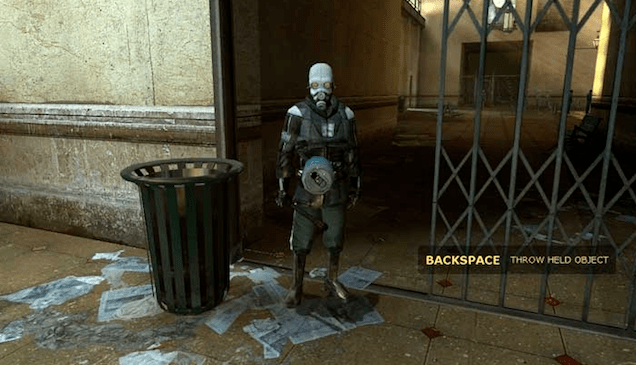
Consider Half-Life 2: You wake up on a train. Weaponless, you witness the cruelty of the enemy Combine first hand. They talk like jerks, beat people, then make it personal by forcing you to clean up after their garbage. One particularly affecting moment has you watch a helpless man being mercilessly beaten, before a Combine soldier closes the door, blocking your view. You can’t even watch.
Half-Life 2 has plenty of storytelling problems, but its first level sets up the conflict between you and the Combine perfectly. Rage simply has characters tell you how bad the Authority are. Several hours in, I’d done almost every quest available to me, and had yet to see any of the Authority’s troops. The Authority is a non-entity in a game where they’re supposed to be the big bad. Imagine playing Half-Life 2 and not encountering the Combine until after you leave Ravenholm. Rage is like that.
Rage seems distinctly conscious of Half-Life 2 throughout the experience. However, Half-Life 2 has stakes. Real, personal stakes. Take the ending: Eli and Alyx Vance are in jeopardy! The cowardly Doctor Breen is escaping! I still haven’t forgotten that. The ending of Rage? Uh… honestly, I have no idea. I mean, I know I was sticking it to the Authority and that the final cutscene had me manually opening all the vault things, but where was the personal connection? Who was I really doing this for?
Pure gameplay is great, but because games are about taking action, most people require some motive to fuel the effort they expend. This is especially true as graphics become more lifelike. It’s one thing to shoot a few pixels on the screen in 1997, but was another to shoot a realistic-looking human being in 2011. We need good reasons for taking action. Rage never really provided one beyond “people are attacking, so attack them back.”
Fortunately, the core of Rage’s genius lies in its combat.
Most modern shooters feature regenerating health, which pushes players into cover every time they take damage. That adds a rough, start-stop quality to play, limiting a player’s tactical options. Enemies are often somewhat tanky, which only exacerbates the issue. Modern shooters also often suffer from a lack of weapon diversity — sure, you’ve got fifty different assault rifles to choose from, but they don’t change the way you play, rendering the choice meaningless. Rage addresses both of those problems.
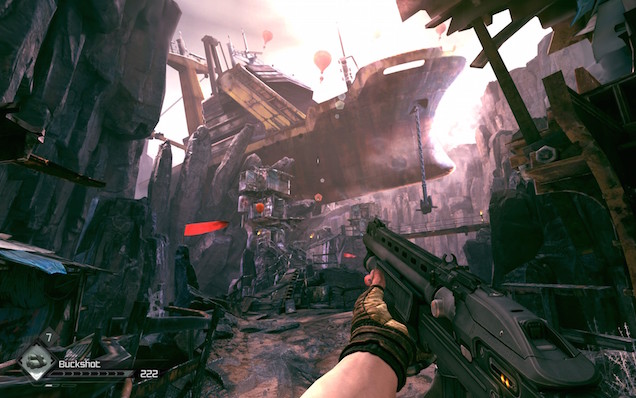
Doom’s encounter design focused on a mix of players attacking unassuming enemies and the occasional ambush. Rage’s core gunplay is a weird, modern version of that. The newer game stumbles slightly by using a regenerating health system and featuring certain enemies that can be a struggle to dodge, but the rest of the game works to cancel this out and offer the player more interesting tactical opportunities. It starts before you even see an enemy.
One way to engage players in a shooter’s world is to have them look for resources. It’s part of the reason games like Dead Space 3 failed — when your resources are universal, there’s no need to explore. If there’s no reason to explore, then you find yourself paying less attention to the level, which pulls you out of the moment. Attention is why games like Dark Souls are so compelling. It engrosses players in the game. Rage’s use of items and the crafting system behind them ensures that the player is always paying attention to their environment.
So, even before we find ourselves face to face with enemy forces, Rage works hard to connect us deeply to the environments we occupy. The required attention to the environment primes us for what comes next, both in terms of headspace and arsenal.
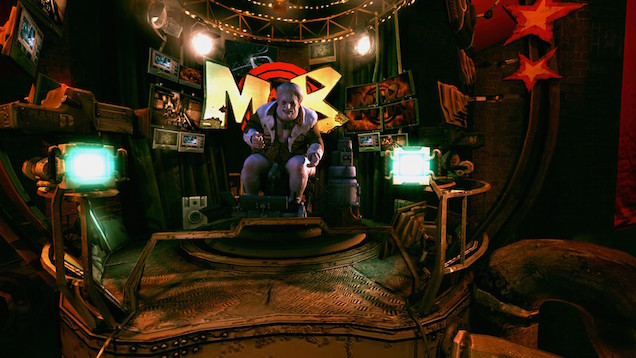
Rage’s enemies, especially the mutants, are a sight to behold, leaping out through cracks in the walls, bum-rushing you down tunnels, using pipes on a ceiling to climb towards you, legs awkwardly dangling in the air. Some will dodge your fire, running up the wall like Faith in Mirror’s Edge. I’ve had mutants run up to me, sliding under my fire as they get close to deliver a quick melee strike. I’ve watched enemies leap into doorframes, providing them with a chance to pounce.
Never before in a game have I faced enemies who felt this acrobatic. It’s unusual to go from a shooter like Killing Floor 2, where I’m nailing consistent headshots, to a game like Rage, with enemies who leap, swerve, and dodge in confounding ways. It’s fun precisely because it’s so demanding of my attention.
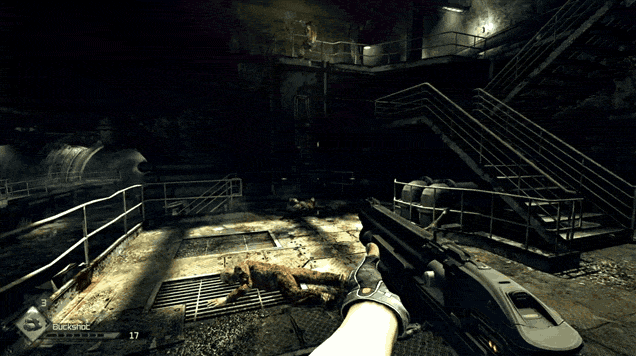
Rage features a bunch of different types of ammo, offering even more tactical choice to the player. Want to mind-control someone? You can do that! Feel like shooting grenades at your enemies? That’s what the shotgun’s pop-rocket ammo is for. Rage even has a callback to Doom’s ultimate weapon, the BFG 9000. Modern shooters may suffer from a lack of weapon variety, but Rage does not.
Combat becomess not just about picking the right weapon for the job, but picking the right ammo. Every shooter has this to some degree, but Rage feels rich and full, a hearty combat stew. If you’ve got pop-rockets, you’ll try to keep enemies at range and attack them when they’re in groups, in order to maximise your ammo. Mind-control darts give you minions to perform your dirty work, while rebar spikes pin enemies to walls, and railgun rounds shoot right through them. Every weapon and ammo type drastically alters the way you play.
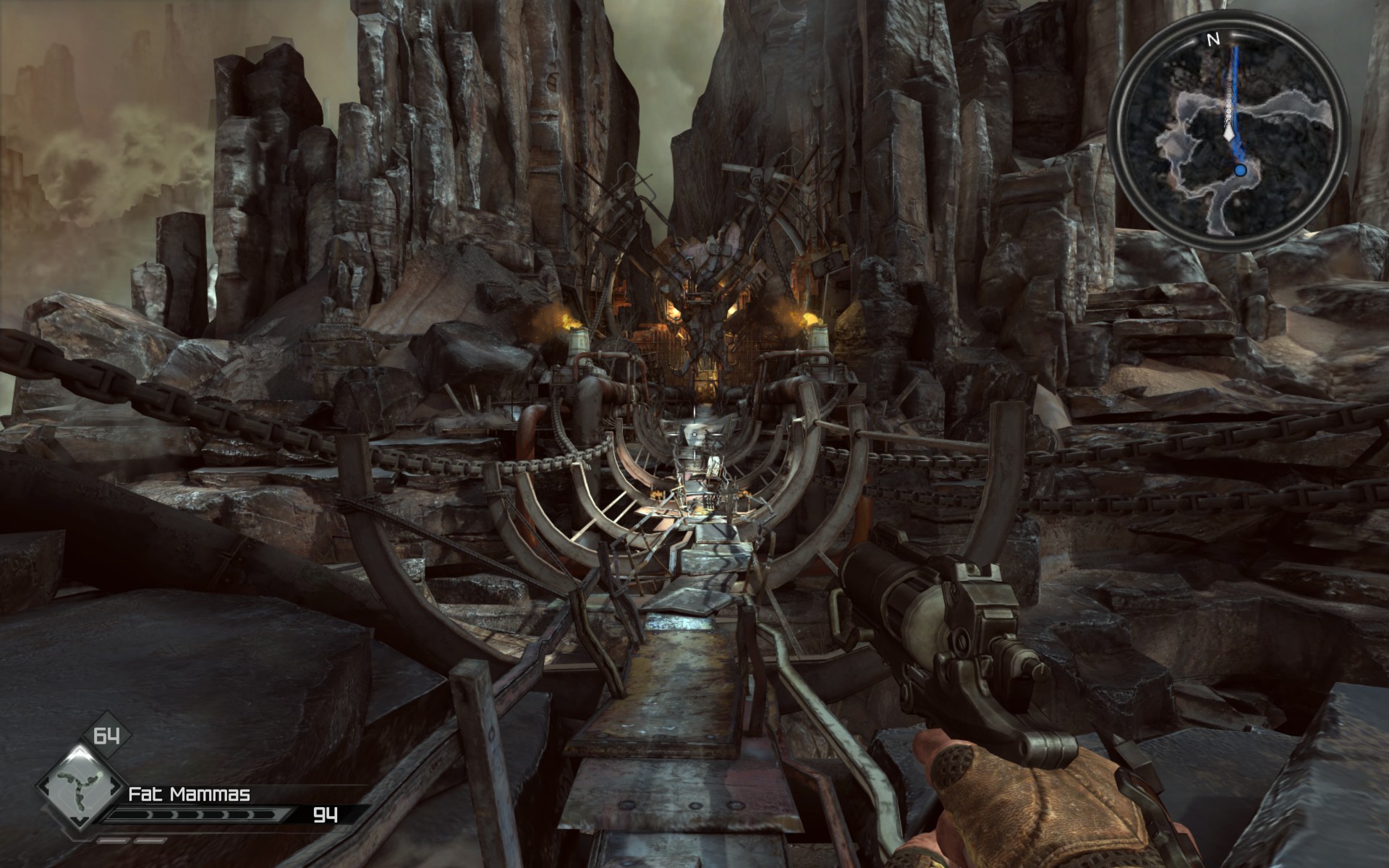
Wingsticks, sentry bots, different grenade types, sentry turrets, and other items influence your playstyle as well. Wingsticks — think boomerangs on steroids — are great for ambushes or for quickly reducing the enemy count while reloading. Bandages mean you can stay out of cover longer, spending more time running around. Grenades are good for clearing large mobs of enemies, but if you kill them, you won’t be able to loot enemies for resources that might make combat easier in the long run. Sentry turrets and bots are great for drawing enemy fire, though the bots work best when you’re on the move and the turrets are good for last stands.
The common through-line here is all about attention and decision making. The best shooters facilitate player creativity, and Rage does so by providing its players with dozens of tactical options at any given moment.
It’s one of the reasons why I’ve never had an issue with returning to previously-explored locations, and why I think singling Rage out for being “repetitive” is a mistake. I think it’s easy to place too much emphasis on the visual diversity, rather than mechanical diversity. Which makes sense: It’s easier to notice two visually distinct arenas than it is to notice whether they play differently.
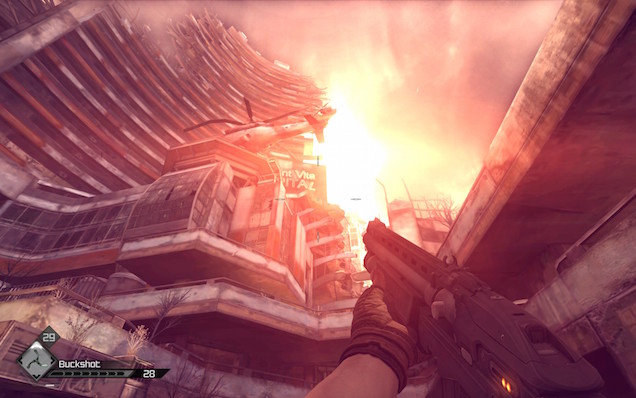
Rage maps may be reused, but the tools provided to you are different, and the enemies spawn in different ways. You might go through one fight using shotguns, then come back later and try with mind control darts and sentry bots. It’s a different experience each time, even if the level looks the same; plus, all of the recycled content is optional to begin with.
Then there’s the cars. Rage’s focus on cars didn’t do the game any favours. Car combat is usually fun but can get old quickly, and Rage‘s car combat was particularly shallow — you have two basic weapon types for the majority of the game, not counting the occasional consumable item like mines. That means that most encounters play out the same. It gets old fast.
Rage is a content-heavy game; my first playthrough took 20 hours. It has a wide variety of minigames, quest, car races, and the like, which is fantastic in theory, but they’re all shallow. There’s only one level of Mutant Bash TV, a combat minigame, for instance. The game lets you repeat it as many times as you want, but it’s the same map each time. It’s indicative of the game on the whole: lots of minigames, little variation. The only thing keeping the game diverse is its combat. You can play a shallow card game with two different people, for instance, or a minigame that consists of clicking one button to roll dice.
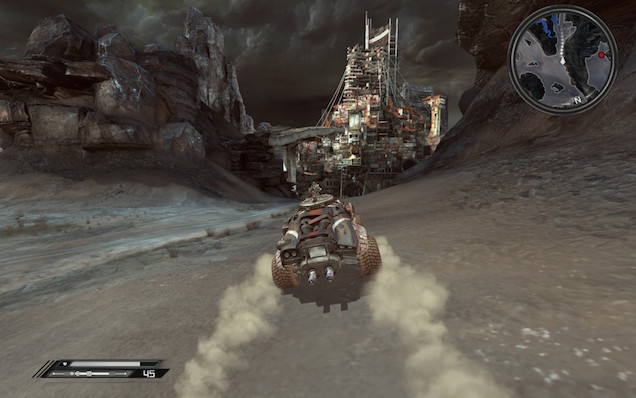
Many of the side missions are simply a repeat of missions you’ve already played, this time in reverse. It’s not to say they aren’t fun — because the combat is great — but asking “haven’t I been here before?” can get a bit old.
When Rage was released, fans were hoping for a game that met the movement-focused, design of a classic id game while still feeling relevant in the modern age of sophisticated video game narrative and expanded player freedom. While it may have failed to live up to its contemporaries in the latter regards, at its heart, Rage is still an id game. Sure, it’s not quite as strafe-heavy, nor does it have you search for health packs or facilitate a lot of jumping, but it’s fast, it’s creative, and it’s interesting. The game lives and dies by its combat.
Rage wasn’t what we expected four years ago, but that’s no reason to resent its existence. Taken on its own merit, Rage is a fascinating experiment. It doesn’t always work right, and it could definitely be better, but that near-perfect combat has given me some of the best time I’ve spent gaming in a good, long while.

GB Burford is a freelance journalist and indie game developer who just can’t get enough of exploring why games work. You can reach him on Twitter at @ForgetAmnesia or on his blog. You can support him and even suggest games to write about over at his Patreon.
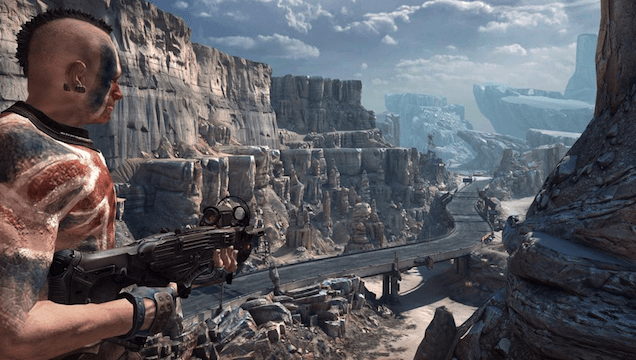
Comments
54 responses to “Rage Was Actually Pretty Damn Good”
I likes Rage, didn’t understand the hate.
Enh. I understand it… because I did kinda hate it.
It was a shambles on the PC, heralded as the second coming of Carmack, but ugly as sin when it got on stage. ‘Megatextures’ didn’t work. Pop-in anywhere upward of ten seconds was shameful. Mouse-smoothing options didn’t work out of the box, leaving the controls feeling like a dodgy port from a gamepad. Weeks of promised patches and accusations between chipset manufacturers, fans trying to tweak .ini files just to get basic functionality. Even after the dust settled and six months later when it was ‘playable’, it was a dramatically underwhelming experience. It was supposed to have a lot of modern features that it failed to implement competently let alone well. The story was a half-finished, unsatisfying failure.
It was a good game made lesser by constantly trying to be something it didn’t know how to be. The only times it was great were those precious moments of joy when it allowed itself to be the game it should have been, and not the game it wanted to be.
Ah yep, well I was a console player back when I played Rage, Do you know if it’s better now? Wouldn’t mind picking it up cheap on PC, unfortunately, something happened and I never finished it on PS3.
There were a lot of patches. It became playable (if still disappointing/flawed) within a few months of launch. I’ve heard some folks say there’s still some .ini/config tweaks to make for optimal performance, but at the very least it should run about as well out of the box (post-patching) now as it did on consoles.
And on Steam sales, I’ve been seeing it going for five bucks. Now, it was a disappointing effort and a pretty muddled game, but that doesn’t strike me as fair. It was definitely worth more than five bucks.
it was a good shooter. story and world exploration however, very short, even on hardest difficulty. was not worth $60.
This. I regret getting the collector’s edition. Should have waited until it was $10 on Steam.
Also, Carmack’s megatexturing was not all it was cracked up to be. I could visibly see textures loading when I turned around. Looked pretty once they did load, but it ruined the immersion.
Yeah, RAGE required a certain amount of config file optimisations… Not ideal but it really did fix a lot of those pop-in issues.
I really struggled to like this game. Nothing too defining as to why I disliked it. But it just didn’t have that X factor. It might have been due to it coming out at the peak of saturation for this style of game at the time.
I thought it was a great game, unfortunately it had massive driver problems on AMD cards, which gave it a level of stuttering that made me feel sick.
This.
Holy crap it was terrible on AMD on release, as a result i never bothered with it after the nausea inducing stuttering as stated by @splendiferous. Perhaps it’s time i delved back in? Surely it’s fixed
.
I remember this was the first game I played on PS3, and I was pretty fond of it four years ago. I picked it up again recently for about five bucks, and while it is still a blast to play, there were so many baffling design choices – the story sucked, ESPECIALLY the ending. There was a boss part way through the game, and it’s the only actual boss you ever encounter. The racing was fun, but almost completely unnecessary. And did I mention the ending?
…I still love this game, though. I’d love a sequel, just so we can see what happens because – I hate to repeat myself – the ending sucked and left so many questions unanswered, but considering how cheap you can find it these days it’s well worth it.
The PC version, like Doom BFG edition, was a rubbish port.
Never had a problem with the PC version. The engine itself has the LOD issue, but at least on the PC you can pump the game up to look better and reduce LOD.
I always loved the game, the gunplay and AI were good. It’s a shame we’ll probably never see a sequel, because it had some good ideas and features. I’ve got it installed to play through again.
Launch had major widespread graphics issues. They patched it a few days later and it worked just fine afterwards.
But that presents another problem, as the patches, added with the game itself, created an almost 22Gbs download. As someone with terrible internet, this was one of the worst things to download.
Yeah, now that you mention it, I do remember that.
i hated the driving and they locked the shooting missions behind having to win x races.
The ending was the worst, just the worst.
I saved the BFG you get at the end because I was expecting a boss fight that never arrived 🙁
Rage’s ending might have been anti-climatic, but far from the worst.
I’d argue that Syndicate’s ending has well and truley taken that crown.
Havent played that.
Oh man. Syndicate! See, I don’t remember it being that bad… In the 16-bit days, pretty much most games didn’t really have ‘endings’ as such. Most games on the SNES you were pretty lucky to even get acknowledgement that you won.
No no no no, stop right there.
To be clear we are not talking about the Bullfrog game from the 90’s, which was perfect in every way, and none shall speak against it.
Rather, I refer to that EA imposter that was released a couple of years ago, to high expectations quickly followed by damning reviews.
It was an obvious cash grab by EA based on the name alone, and quite frankly, Starbreeze could have done a lot better with the IP.
Ohhhhhhh.
*narrows eyes*
That’s not Syndicate.
Fun game, great shooter mechanics, story was interesting at the beginning and then got lost a bit and ended abruptly. I think we’ve found out where Bungie are getting their inspiration from.
Yeah the same place Id did: Borderlands
Borderlands wasteland setting – fun = Rage
Borderlands co-op loot based shooter – fun + grind = Destiny
Hmmm, I don’t know. It sounds like the gun combat in Rage is better than that in Borderlands. I remember the AI in Borderlands being very predictable and lacking in variety. I loved the guns in Borderlands, but it sounds like in Rage the guns are decent. I think the article is saying that Rage was trying to be all things to all people rather than just concentrating on the gun play.
Yeah I was probably too harsh on Rage at the time but I think trying to emulate Borderlands open-world nature and quest structure did it no favours
I didn’t mind the game, the ending was incredibly disappointing though
Short, bugged, entirely too derivative.
IDs my favorite company. Wolfenstein, Doom, Quake and to a lesser extent commander keen filled my childhood. Rage has two problems that have contributed to its less than stellar reviews and reception.
– ID tech 4, Rage was the first game on this new engine, but unlike Doom 3 it was on a different cycle. Doom 3’s ID tech 3 was all about graphics and dialing them up to 9. I remember at E3 (i think it was E3) they had to prove to judges that the gameplay was real because it was so far ahead of the rest of the field. ID tech 4 however, while improving on graphics worked much harder on developer tools and reducing time it takes to craft games, a lot of new tools were worked on and talked about in the lead up on how this version of the engine works heavily on making it as easy as possible. ID’s engines always set the bar it seems, and this time around they wanted to work on the developer end.
– Rage was also a departure of what ID is good at, Killing Nazi’s and killing Demons with shotguns. Their gameplay is easy to spot. Even though Wolfenstein The new order was developed by a different company it relied heavily on the gameplay style ID is known for. While I loved Doom 3 even Doom 4 is set to return to this iconic style. Rage has a lot of game play aspects that ID had never really tackled before, the gun play was tight… but the rest you could tell it was ID’s first time trying it.
So together with ID Tech 4 not being as graphically advanced, to the point it was only on par with games that were already out, and Rage being a departure of what ID is good at, it created this game that was never really spectacular at anything. It had good graphics and good gameplay… it was a good game. 8 out of 10. I think that is what disappointed most gamers, ID has always set the bar high and while the developer tools might have been spectacular or revolutionized the industry the end user, “gamers” saw little of it.
I got bored with it very quickly. All the working parts were of decent quality, it just wasn’t very compelling.
I was personally enjoying the hell out of this game…up until the last 10 minutes
I found it like two months after release for $15 at Dick Smith. Knew nothing about it, really. I thought it was a great deal of fun – it looked absolutely gorgeous, had a rock solid frame rate and really tight gun gameplay and some excellent AI. The mini games, cars and story let it down – but it was still a blast to play. I have over 70 hours on it.
Wow you got your money’s worth! 15 bucks for 70 hours is decent entertainment value. I got about 30 hours out of it and I my thoughts were exactly the same. I thought the frame rate was smooth and the visuals, especially the enemies and npcs were awesome. Everything else was a bit of a let down.
The only only memorable thing about this game for me was its unmemorability.
I’m pretty sure I clocked it at some stage but I cannot for the life of me remember a single thing about it.
Found it really boring. Kinda wished it was linear.
I agree, it was immensly dull. I never endured the first two hours so just returned it.
Exactly, iD should of stuck to making it a linear shooter, like they are good at.
Rage kicked ass, looked great and played well. Driving was also slick, but the story didn’t really go anywhere.
They put a demo on the 360 (a few months after release too – which is always a sign that the game is tanking) twice I played it and twice I fell asleep whilst wandering around this town trying to find a door in corner of nowhere – a game sending me to sleep is a cardinal sin IMO (Skyrim also did this and was promptly traded!)
I never played the game, but honestly, I like trains.
Stay true to your convictions, my man, no matter how misplaced they may be..
Because borderlands was very similar, much better and released around the same time.
It’s a fine game, not great, honestly not even as good as this article felt like it was making it out to be, but still fine.
But it DID get me excited for Wolfenstein: The New Order, which was an excellent game.
I liked Rage. You guys think there is any chance of a sequel?
It is still sitting fully wrapped in my pile of shame. I may unwrap it and play it – but it’s more likely I’lll play it when the (un)official sequeal with a real ending is made.
Vastly under-rated game. I think anyone who actually finished it would agree but on the surface it looked like a Borderlands rip off and if you didn’t give it a chance that would be your only perception of it. I actually enjoyed the card mini game a lot and thought it had a lot of depth for a purely optional part of the game. Graphics were top notch, game play stellar, driving though was mediocre and forcing you to win races to get to missions a misguided step.
Would have given it an 8 or 9 out of ten depending on my mood 🙂 Great article.
I really like this game on console, but the megatextures ruined it for pc
Does anyone know if its being ported to xbox one? I never got around to playing it the first time, but actually really wanted to
I really enjoyed Rage
What I find slightly amusing is how many people said it was repetitive – and yet CoD, MoH etc are all based on one thing, and sell millions based on this one trick alone.
Another thing that I felt was not recognised was the facial expressions of the NPC’s. I appreciate in this age of ADHD based entertainment, most players would have spacebarred their way through the dialogue, but I enjoyed seeing how the nuances of the characters were portrayed, especially that old black mechanic, who had some good animations.
Will there be a sequel ? After so long from initial release, I’d normally say No, but I was surprised that they not only released a patch for the game about a year ago, but an addon was also released.
Maybe if they’d worked on a sequel to be released at the same time as Mad Max: Fury Road, it might have got a boost from reflective sales, but given Borderlands has milked this genre and people are getting tired of it, I doubt it.
As for the criticisms of the ending, they are valid, but there was a study not that long ago that showed the majority of gamers do not play a game to it’s conclusion, and it’s possible that with project deadlines looming, it was decided to not put as much effort into it.
That doesn’t condone it at all, and was disappointing to be so anti-climatic.
Rage was 2/3rds of a good game. As many have already mentioned, it’s abrupt ending was a big let down. For me personally, that was my only real problem with it. The gunplay was classic id, the hub formula was nice and old school (mainly Hexen) and the vehicle combat, while it needed a little work, was one of the few vehicle sections in an FPS I didn’t utterly hate.
I didn’t hate Rage, but it felt badly designed. Every time I turned around I’d see the textures popping in as opposed to every Unreal engine where they’d pop in on level load and then you’re done. Once I noticed the pop-in, I’d see it every time I turned sharply and it felt real distracting. This was on 360 too, I’m sure it could have been optimised better.
The other issue I had was that every area was basically a circuit. Once you reach your objective there was always some fancy switch or button that took you directly to where you entered the area to save backtracking. I honestly prefer backtracking as it felt stupid getting a free pass out of wherever you shot your way into.
Then there was the finale. Everyone was like “this is our only chance for the next bajillion years, after that we’re stuffed, this it is… oh, and you’re on your own. We’re just gonna sit back and eat crispy friend lizard and watch on the tele to see if you make it. good luck.”… and here have a minigun, its the only time you’ll use it in the whole game, so have fun. Sorry if it could have helped you out earlier.
Rage was a shameful game on launch. The issues I had with it on PC were a laundry list of everything you can do wrong with a port, plus some bonus issues. And texture pop-in lasting 5-10 seconds? Unforgivable. You cannot release a game that looks like that and not expect to get panned for it.
Rage is an example of a game getting in the way of itself. Moments of fun are snatched briefly then interrupted and gated of in between their fumbling, ham-fisted attempts at poorly-paced open-worlding. If anything, the time between fun gunplay moments should’ve been reduced instead of padded out by torturously pointless driving segments.
Moments of greatness weighed down by a world of shit. Rage isn’t worth it even today, with patches and tweaking.